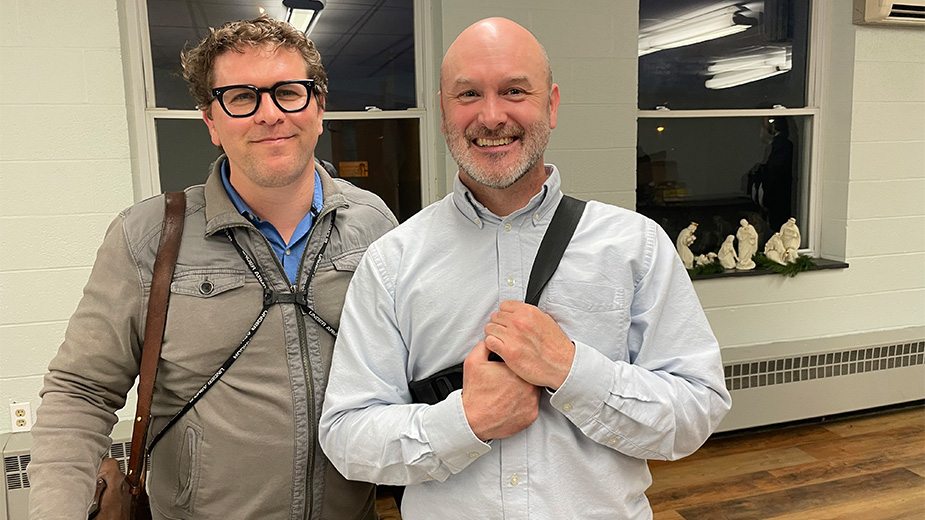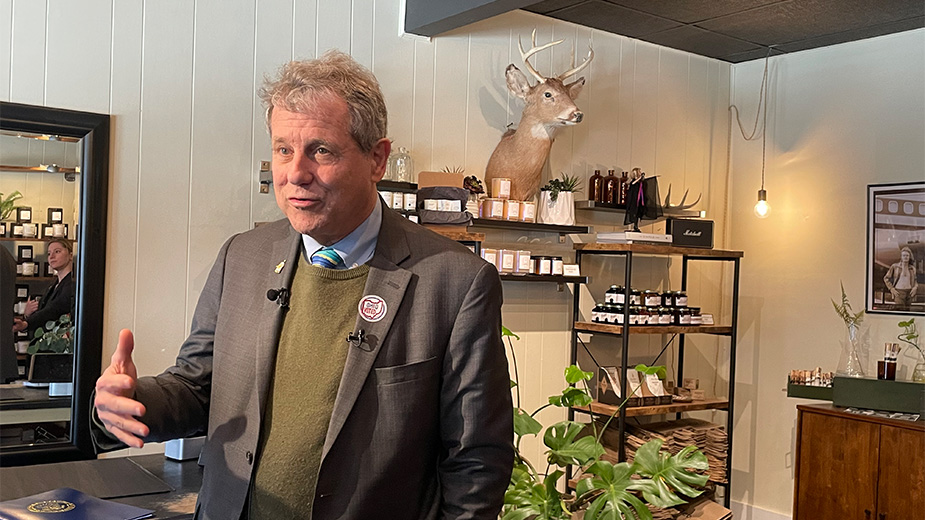Gateway to Girard Gets Transformation
GIRARD, Ohio – Three years after the release of the U.S. 422 Corridor Redevelopment Plan, Girard and Youngstown are making progress to transform the industrial corridor that links them.
“We’ve gotten quite a few things done,” says Lauren Johnson, manager of the 422 Corridor project. “We have a lot more that will happen in the future.”
The project is especially important to Girard. “The future of development must include the beautification of that area,” Mayor James Melfi says.
Girard installed a welcome sign and landscaped sections of U.S. Route 422 shortly before the official release of the plan in May 2014. Youngstown began landscaping stretches in Brier Hill near the entrance to the state Route 711 connector about the same time.
The redevelopment plan aims to transform the appearance of the industrial corridor, improve infrastructure and encourage economic and neighborhood development in both cities.
The Youngstown Neighborhood Development Corp., the Youngstown Warren Regional Chamber and the Trumbull County Board of Commissioners helped bring together 14 organizations to fund the comprehensive plan for the corridor, which was written by Interface Studio LLC of Philadelphia.
The funding phase began after the study was released and Johnson was hired as project manager in November 2015. “This is our legacy corridor,” she says. “This is where the steel mills were. So this is some of the oldest infrastructure we have in the Mahoning Valley.”
The project extends from state Route 193 in Youngstown to Liberty Street in downtown Girard. Much of the Girard side of 422 is made up of retail properties. Industrial and warehouse properties dominate the Youngstown side.
Last September, the William Swanston Charitable Fund sponsored the Girard Better Block on Liberty Street in downtown Girard. It’s based on a national model highlighting local businesses while installing temporary bike lanes and crosswalks. “We focused on making it more pedestrian-friendly,” Johnson says. “We had great engagement from the residents and from the businesses there.”
The Swanston fund also sponsored the installation of three murals by Girard artist Jack Carlton. His project, “Murals Without Walls,” started in downtown Youngstown in the 1990s. Carlton, a printmaker and a professor at Hiram College, produces large prints of famous art works on weather-resistant vinyl.

Pictured: Jack Carlton has installed several murals displayed throughout downtown Girard.
One mural is a reproduction of the program cover of the 1931 opening of the Warner Theater in Youngstown, which Carlton’s uncle, Arthur “Barney” Carnes, designed. Carnes produced posters for theaters in Youngstown and the New Mock and Wellman theater in Girard, posters inspired by boxing match advertisements.
The Warner mural is near the Girard-McDonald Viaduct at the edge of downtown. A Max Mason painting of a player at bat, “Spring Training Fielder,” and a Clyde Singer painting of a baseball player, “Minor Leaguer,” are the other two works, both on Liberty Street.
Carlton plans to soon display another mural featuring Carnes’ works on the side of the former Wellman Theater downtown, today home of Jesus Is the Way Ministries.
“I want to display photographs of historic Girard,” Carlton says of his plans. He intends to display at least 20 photos of the historic downtown and along State Street.
Johnson is proud of another first that she says will help will transform State Street: the phase-two results of the Targeted Brownfields Assessment program for the former McQuaid’s service station. It will allow the Trumbull County Land Bank to begin remediating the property. “There hasn’t been an abandoned gas station grant in this community,” Johnson says.
Meantime, the Girard Downtown Redevelopment Revitalization Program is helping businesses in the heart of the city and on the fringe of downtown renovate their facades and make interior improvements by using $500,000 from Trumbull County and the state.
Owners who receive funds are required to match them dollar for dollar. Girard was one of four cities in Ohio to receive a downtown revitalization grant in 2016, Mayor Melfi says.
The 422 project affects residential neighborhoods as well, including Steelton and Brier Hill in Youngstown and Parkwood in Girard. Most residential vacancy issues have been in Youngstown neighborhoods, says Debora Flora, executive director of the Mahoning County Land Bank.
In 2009, Flora began holding discussions with Vallourec Star about vacant properties in the lower Brier Hill neighborhood.
“We had neighborhood meetings, and we began to schedule activities like neighborhood cleanups,” she says. “And we did do some demolition activity, which was largely funded by Vallourec.”
Flora expects more demolitions in Brier Hill in the near future. Vallourec is planning to do more landscaping work along 442 later this summer, says spokeswoman Jean Gaetano.
In Trumbull County, two workdays to beautify neighborhoods in the 422 project area have taken place since Johnson was hired as project manager, says Trumbull County grants manager Julie Green. “[Girard] has applied for and received competitive grants for the Parkwood neighborhood because this is a combined effort to look at the neighborhoods and the industrial corridor,” she says.
Trumbull Neighborhood Partnership, the demolition arm of the Trumbull County Land Bank, is identifying houses in Girard that should be razed.
That’s been a huge asset for Girard,” Johnson says. “Their housing values are much more stable than the city of Youngstown.”
Girard City Council has codified commercial property and vacant property maintenance standards and updated zoning standards. The city resurfaced 5,000 linear feet of roads in the wake of the corridor plan, including parts of Davis Street and Indiana, Illinois, Lorain, Amherst and Atlanta avenues.
In the industrial area of the corridor, Johnson is hosting mixers that bring business owners together. The first mixer took place in May 2016 and the second will occur before the end of the year, Johnson says. She hopes to schedule it so that it coincides with an important project update.
“Our goal for the mixers is to just get people talking,” she says. “Get them in a room and build those networks and relationships.”
The chamber is close to making another formal announcement, she says. All of the lights along the corridor from Interstate 80 to downtown Youngstown will be changed to light-emitting diodes.
“Not only will it look much cleaner and brighter, everything will match,” she says. “It will be a lot safer – not only for the residents but also for the companies that use the roadway for transportation.”
The work being done is just the beginning, says Ian Beniston, executive director of the Youngstown Neighborhood Development Corp. “I don’t think the recreational piece of the study can be understated,” he says.
Opening the Mahoning River and areas nearby to kayaking and biking is a key aspect of the recreational component of the plan. Girard plans to open a public canoe and kayak launch off Front Street. The Ohio Department of Natural Resources is conducting several studies to learn whether the launch can be opened without harming wildlife in the area.
Youngstown is considering funding a study that would examine the removal of three dams along the Mahoning River inside the city, which would make the river more accessible for recreation.
Johnson and Beniston highlight the long-term nature of many of the goals. At least five or 10 years will be needed to complete the major infrastructure improvements. More funding will also be needed, Beniston stresses.
“The project continues to need support,” he says. “All of these things require money and resources to get done. The vision is there and some of the capacity that’s needed is there. It’s just a matter of incrementally acquiring the resources and moving through the project.”
Copyright 2024 The Business Journal, Youngstown, Ohio.



